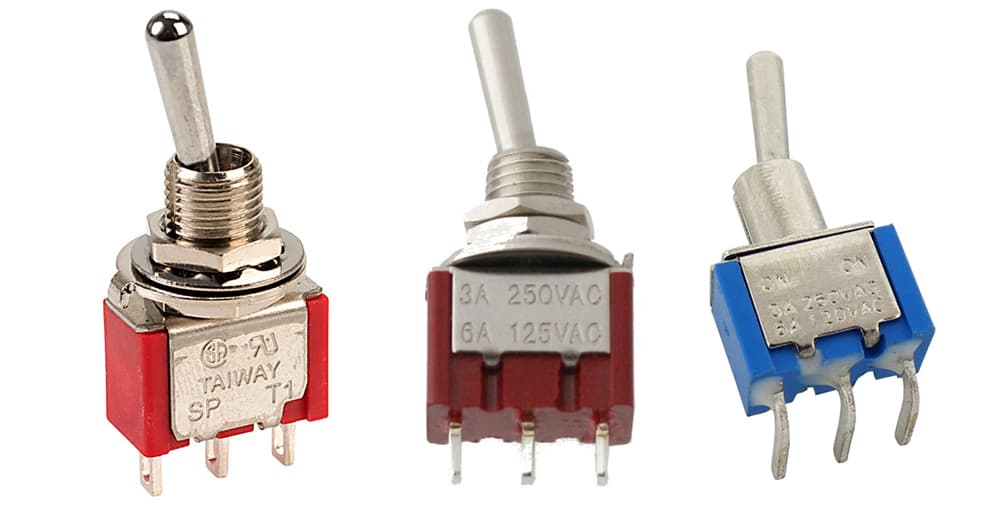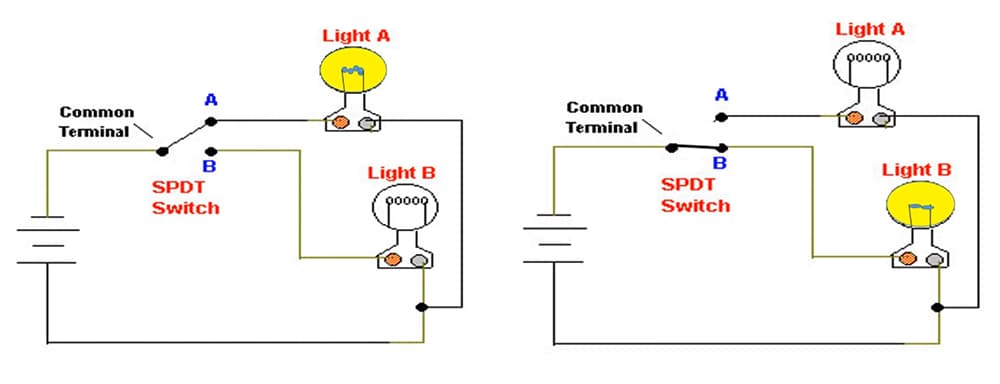What is a Single Pole Double Throw Switch? A switch may contain one input terminal that can move between two outputs. Thus, we are speaking about a Single Pole Double Throw (SPDT) switch. Here, you can wire 2 units simultaneously.

The exact task a SPDT switch can perform varies and depends on the exact circuit wiring. For example, it can handle the task of an on-off switch. In other words, you can use it just to keep a device on or off.
Besides, a SPDT switch can utilize two different connections for specific circuit functioning purpose.

If you consider two different printer modes such as a Ready one and Standby one, this can be a quite good example of a SPDT switch application.
Single Pole Double Throw (SPDT) Switch Circuit
To catch the idea of how a SPDT switch works within a circuit, look at the following figure that reveals a 2-device wiring diagram.

The diagram is a good demonstration of two modes you can execute with a SPDT switch. Arrange it into the mode-1 position and you make the circuit for the device №1 (a lamp, for example) and break it for the device №2 (LED, for example).
In other words, you feed the device №1 and make it be on, while not feeding the device №2 and, thus, keeping it off. If you put the SPDT switch into the mode-2 position, you make the circuit for the device №2 and break it for the device №1.
Thus, the device № 2 gets on while the device № 1 gets off.
To sum up, it means you get dynamic 2-mode capacity.